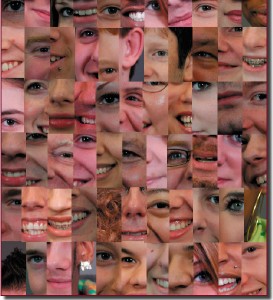 Learning has many faces. Many models. Our educational models can serve us – but we need to keep our minds open. The science of learning, in fact any science, is not ‘truth’. It is about models – models that are tested over time and circumstance – each approximating the truth.
Learning has many faces. Many models. Our educational models can serve us – but we need to keep our minds open. The science of learning, in fact any science, is not ‘truth’. It is about models – models that are tested over time and circumstance – each approximating the truth.
I was asked recently by Sheryl Nussbaum-Beach in one of the Powerful Learning Practice’s eLearning courses – How do you define learning?
Well, I spend a lot of time thinking about how people learn. Good thing – considering I’m a teacher! 😉
(I am sure you do too!)
I would have easily answered that at different times in my career. In recent times, I could have quickly answered from a social constructionist perspective.
It’s not so clear to me these days – as I read more and as I think more.
‘How do you define learning’ is a question that reminds me of Seymour Sarason’s book “And What do You Mean by Learning”. It took a whole book! 🙂
Sometimes for this kind of question, I really fall back to Piaget’s description of assimilation and accommodation.
I fall less to Skinner’s operant conditioning theories — although, I must admit, as I read more through a certain lens these days, I am intrigued by the impact such a perspective may have for us. Some of these readings are listed here:
Why We Make Mistakes by Joseph T. Hallinan
You Are Not So Smart by David McRaney
Who’s in Charge? Free Will & the Science of the Brain by Michael S. Gazzaniga
Thinking, Fast and Slow by Daniel Kahnemann
Throughout these 40 or so years, I have traveled the path of behaviorism, constructivism, cognitivism, social constructivism, contructionism, social constructionism, intentional learning theory, connectivism — now I am a ‘pot pourri of ponderings’. 😉
Models and theories, to me, are not the truth – as I have indicated in Limited, and Fooled by, Our Senses and in The Trickery of Temporary Truths. However, they serve us well in helping us think about possibilities.
Intentional Learning theory, proposed by Marlene Scardamalia and Carl Bereiter, has resonated with me for a long time. It, for me, accommodates this pot pourri. Carl, you may not know, was a leading behaviorist back in the day. He, along with Engelmann, developed Distar in the sixties. He followed this with SRA and, more recently, Open Court. Marlene and he then developed CSILE (Computer Supported Intentional Learning Environments) which is now Knowledge Forum. They are premier pioneers and prophets in ‘knowledge building’. See their Institute for Knowledge Innovation and Technology.
What I am appreciating is the rich, textured fabric of ‘what learning is’ – that it is illuminated by many of these theories – and more.
It seems to me that Judith V. Boettcher’s 10 Core Learning Principles speak to my ‘pot pourri’ in saying, “Research findings into how our brains work* are stimulating a re-examination of traditional principles of designing teaching and learning experiences. Insights from this research are not only helping to deepen our understanding of traditional core learning principles, but they are also providing practical guidance on how to design learning experiences for our new high technology environments.”
(Bolding is mine.)
I am constantly redefining learning and all the practices related to it.
How do you define learning?
* Bransford, Brown, and Cocking 2000; Damasio 1999; Pinker 1997
Related articles
- The Power of ‘Knowledge Sharing’: Tools to Do So (theconstructionzone.wordpress.com)

Peter thanks so much for this post – you have now set me on the path of MORE reading ahhhhhhhh!!!!! 😉
Sincerely, this is a really good overview of many ideas and theories. I am of the belief that, sadly, many educators aren’t interested in this very key question – how do humans learn?
Instead they are concerned about the syllabus that they are required to teach.
I do like your comment that models are only trying to approximate the truth, we must always remember that – they are merely models -you are also correct when you say they help us to think about possibilities – always a good thing.
It’s a shame you don’t have a donate button! I’d definitely donate to this excellent
blog! I suppose for now i’ll settle for bookmarking and adding your RSS feed to my Google
account. I look forward to brand new updates and will share this website with my Facebook group.
Chat soon!